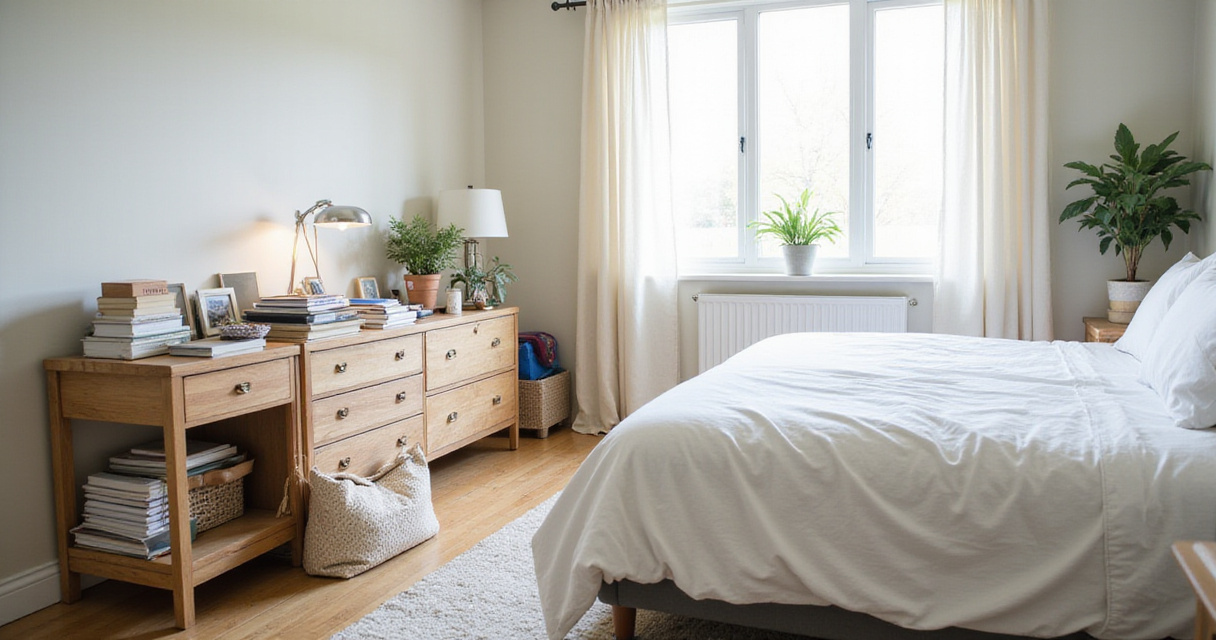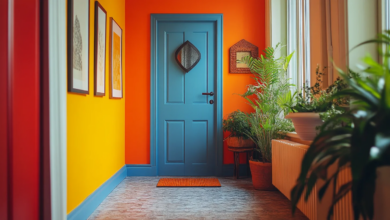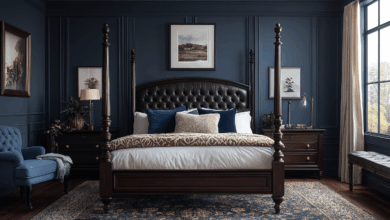24 Must-Know Tips to Create a Stunning Minimalist Bedroom

Your bedroom should serve as a peaceful retreat-a haven where you can relax, rejuvenate, and disconnect from daily stresses. Unfortunately, many bedrooms become overwhelmed with clutter, unfinished tasks, and visual distractions. This is where adopting a minimalist bedroom design can make a profound difference. Minimalism isn’t merely about removing items; it’s about thoughtfully crafting a space that fosters tranquility, sharpens focus, and enhances your overall well-being.
Picture entering a bedroom that feels open, serene, and wholly dedicated to rest. Minimalist bedroom design offers exactly that: a deeper harmony with your surroundings and a clear focus on what truly matters. Whether you’re redesigning from the ground up or refining your current setup, these 24 indispensable strategies will help you create a minimalist bedroom that functions as your personal sanctuary.
1. Begin with a Comprehensive Decluttering
Decluttering forms the cornerstone of minimalist bedroom design. A clutter-free room cultivates calmness and reduces anxiety, transforming your bedroom into a peaceful refuge. By systematically eliminating unnecessary possessions, you open up your space and highlight only the essentials that bring value and joy.
Start by clearing surfaces prone to clutter such as nightstands, dresser tops, floors, and under-bed areas. Next, tackle your closet with honesty-keep only what you wear regularly. Extend this process to books, decorative objects, and any items that no longer serve a purpose. The impact of removing just a single box of excess belongings can be transformative, not only physically but emotionally, as the room breathes new life.
2. Choose a Calming Palette of Neutral Tones
Neutral hues are vital in establishing a soothing and uncluttered environment, essential to minimalist bedroom aesthetics. Colors like soft whites, warm beiges, gentle grays, and muted pastels reflect light and create an illusion of spaciousness. They provide a subtle backdrop that allows textures and carefully selected details to shine without overwhelming the senses.
Consider shades such as cream, dove gray, sand, or pale blue, depending on whether you want a cozy or crisp atmosphere. Take into account your room’s natural lighting to select colors that harmonize throughout the day. This approach can make even compact bedrooms feel airy and inviting.
3. Maintain Bare and Uncomplicated Walls
Keeping walls free from excessive decoration is crucial for fostering a sense of openness and calm. Overcrowded walls with multiple artworks, busy wallpaper, or cluttered shelves can overwhelm the eye and disrupt mental relaxation. Instead, opt for one or two thoughtfully chosen pieces-perhaps a striking abstract painting, a minimalist mirror, or a small, cohesive gallery that complements the room’s theme.
As minimalist designer John Pawson notes, “Negative space is often more important than what you include.” This philosophy guides the transition from bare walls to the carefully selected furniture that defines your minimalist bedroom.
4. Limit Furniture to Functional Essentials
Every furniture piece in a minimalist bedroom should have a clear, practical purpose. Typically, this includes a bed with a quality mattress and frame, a bedside table, and adequate clothing storage. Additional items should be evaluated based on necessity-if you don’t watch TV in bed, a TV stand is superfluous; if you don’t apply makeup in the bedroom, a vanity may be unnecessary.
Prioritize multi-functional furniture that maximizes utility without crowding the space. This intentional selection ensures your bedroom remains uncluttered and purposeful.
5. Opt for Sleek, Low-Profile Bed Frames
Choosing a bed frame with a low profile and simple design is key to preserving a sense of openness. Bulky or ornate frames consume visual and physical space, detracting from the minimalist aesthetic. Platform beds or frames with clean lines in neutral materials like wood, metal, or linen upholstery work best. Avoid elaborate headboards or bright colors that disrupt the room’s harmony.
6. Invest in Quality, Understated Bedding
With minimal clutter, the bed naturally becomes the room’s centerpiece. High-quality bedding enhances comfort and luxury without unnecessary embellishments. Natural fabrics such as linen, Egyptian cotton, or silk offer breathability and texture, contributing to restful sleep and a serene atmosphere.
- Choose solid colors or subtle patterns in whites, creams, grays, or earth tones
- Prioritize organic or sustainable materials for added comfort and environmental benefits
- Consider temperature-regulating properties for year-round use
Explore options for organic cotton bedding or linen bedding to elevate your minimalist bedroom.
7. Limit Throw Pillows to a Select Few
Excessive throw pillows create visual clutter and contradict minimalist principles. Aim for one to three pillows that complement your bedding and add subtle texture or color. A single statement pillow or a pair of matching cushions can provide balance and symmetry without overwhelming the bed.
8. Keep Nightstands Clear and Functional
Bedside tables should be reserved for essentials only-a reading lamp, a book or e-reader, a small plant, or a framed photo. Avoid piling on decorative items or leaving visible cables and chargers. This restraint fosters a calm environment conducive to restful sleep.
9. Incorporate Clever Hidden Storage
Smart storage solutions are indispensable for maintaining a minimalist look while keeping belongings organized. Utilize under-bed drawers, headboards with compartments, storage ottomans, or wall-mounted shelves that blend seamlessly with the room’s color scheme. Vertical storage units can maximize space without adding bulk.
- Under-bed storage drawers
- Floating wall shelves
- Storage ottomans
- Headboards with hidden compartments
- Multi-purpose furniture
10. Maximize Under-Bed Storage for Out-of-Season Items
Under-bed space is perfect for storing items you don’t need daily, such as seasonal clothing, extra bedding, luggage, or shoes. Use clear, labeled containers to keep contents visible and protected from dust or moisture, ensuring your minimalist bedroom remains tidy and functional.
11. Conceal Electrical Cords to Reduce Visual Clutter
Visible cords disrupt the clean lines of a minimalist bedroom and can pose safety hazards. Use cord covers, cable organizers, or furniture placement to hide wires. This not only enhances aesthetics but also reduces tripping risks and prevents damage from pets or children.
12. Select Simple, Purposeful Lighting Fixtures
Minimalist lighting should feature clean lines and geometric shapes without ornate details. Consider recessed lighting, single pendant lamps, wall sconces, or basic floor lamps. Choose warm or neutral light temperatures to create a cozy yet modern ambiance.
13. Harness the Benefits of Natural Light
Natural light brightens and visually expands your bedroom, promoting a healthy circadian rhythm and reducing energy consumption. Replace heavy drapes with sheer curtains or light-filtering blinds, keep windows unobstructed, and use mirrors to amplify sunlight. Regularly clean windows and trim outdoor foliage to maximize light entry.
14. Display One or Two Thoughtful Artworks
Limit wall art to a few meaningful pieces that evoke emotion or personal significance. This approach prevents visual overload and ensures each artwork contributes to the room’s calm and intentional atmosphere.
15. Add a Single, Soothing Green Plant
A solitary plant introduces life and a natural element without cluttering the space. Choose low-maintenance varieties like snake plants, ZZ plants, or peace lilies to enhance air quality and add a touch of tranquility.
16. Opt for Simple Window Treatments
Choose roller blinds, Venetian blinds, or lightweight curtains in neutral tones to maintain clean lines and allow natural light to filter softly. Avoid heavy fabrics or elaborate patterns that disrupt the minimalist aesthetic.
17. Keep Floors Completely Clear
Clear floors contribute significantly to a spacious and orderly feel. Remove shoes, laundry, books, and unnecessary furniture. Manage cables to prevent tangles and hazards, preserving the room’s clean flow.
18. Anchor the Room with a Plain, Natural Rug
A simple, unpatterned rug made from wool, jute, cotton, or sisal adds warmth and texture without visual noise. Choose neutral shades that complement your color palette to ground the space subtly.
19. Avoid Excessive Layering of Decor
Resist the temptation to pile on throw blankets, pillows, or decorative objects. Minimalism values negative space as much as the items themselves. Keeping decor sparse promotes mental clarity and a restful environment.
20. Use Varied Textures to Add Dimension
Texture is essential in minimalist design to prevent sterility. Combine linen bedding, wool throws, wooden furniture, metal accents, and natural fibers to create a tactile, inviting space that remains visually simple.
21. Maintain Clear and Organized Horizontal Surfaces
Nightstands, dressers, and desks should be nearly bare, featuring only a few purposeful items. Use drawers and concealed storage to keep surfaces tidy, reinforcing the minimalist ethos of intentionality.
22. Employ Mirrors to Visually Expand the Room
Strategically placed mirrors reflect light and create depth, making small bedrooms feel larger. Position mirrors opposite windows or near light sources to maximize their effect, but avoid reflecting clutter.
23. Choose Decor That Combines Beauty and Function
Functional decor maximizes space and reduces clutter. Examples include storage ottomans, floating shelves, mirrors, woven baskets, and lamps with built-in USB chargers. Each piece should serve a dual purpose, enhancing both aesthetics and usability.
24. Develop a Consistent Maintenance Routine
Regular upkeep is vital to preserving your minimalist bedroom’s tranquility. Make your bed daily, put clothes away immediately, clear surfaces nightly, clean floors weekly, and schedule monthly decluttering sessions. This ongoing care prevents clutter from creeping back and maintains the room’s serene atmosphere.
- Daily bed-making
- Immediate clothing storage
- Nightly surface clearing
- Weekly floor cleaning
- Monthly deep decluttering
- Seasonal rotation of decor
Final Thoughts
Adopting minimalist bedroom design transcends mere decoration-it’s about crafting a space that nurtures your mental and physical health. By implementing these 24 essential tips, you can transform your bedroom into a serene, clutter-free sanctuary that enhances relaxation, sleep quality, and daily peace.
As someone passionate about sustainable living and mindful spaces, I’ve witnessed how minimalism reshapes not only rooms but our relationship with home. By removing excess, you create room for what truly enriches life-be it restful sleep, mental clarity, or the simple joy of a harmonious environment. Begin with intention, take small steps, and watch your minimalist bedroom evolve into a transformative retreat.




